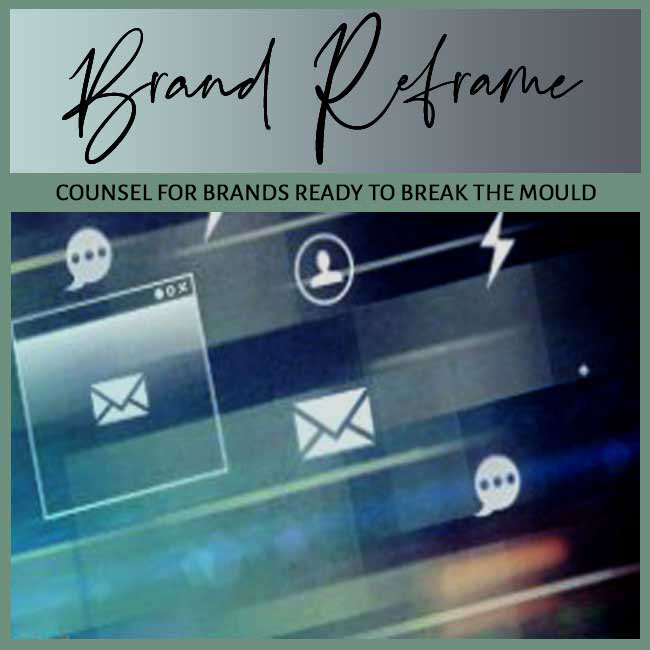
BY: SHOBHA PONNAPPA | BRAND BREAKTHROUGH STRATEGIST | 45 YEARS | 125+ CLIENTS
Brand alignment is the harmony between what a brand promises, how it behaves internally, and the experiences it delivers externally. It ensures that strategy, culture, communication, and customer touchpoints work together without contradiction. When alignment is strong, brands feel trustworthy and consistent. When it is weak, mixed signals confuse both teams and audiences. Misalignment often causes wasted marketing budgets and weak loyalty. Over time, the gap erodes brand credibility.
In my work with brands, I’ve seen that alignment is an invisible growth driver. Teams that understand and live the brand create authentic, seamless experiences. Customers sense when internal values and external promises match. Without alignment, even smart strategies feel hollow. Misaligned brands struggle to inspire employees and disappoint buyers. Restoring alignment unlocks new energy and confidence.
Today’s audiences evaluate brands across every touchpoint. They expect consistent experiences from first ad to post-purchase support. Any inconsistency triggers doubt and reduces trust. Social media magnifies disconnects instantly. Reviews and employee commentary expose gaps faster than ever. Alignment has become non-negotiable.
Investors and partners also watch alignment closely. Disjointed brands appear risky and unstable. Internal misalignment slows decision-making and confuses teams. Strong alignment signals operational maturity and focus. In a world of transparency, aligned brands enjoy resilience. They navigate crises with credibility and speed.
Alignment begins with a clear vision and purpose shared across the organisation. Every leader and employee should understand why the brand exists and what impact it seeks to create. Without a unifying purpose, teams drift into conflicting agendas. Vision acts as a compass during change and challenge. It helps prioritise decisions and investments. Strong purpose makes alignment sustainable over time.
Leaders must communicate this vision repeatedly and live it visibly. Strategy documents alone are not enough. Teams look for daily proof in actions and decisions. Purpose-driven leadership reinforces brand coherence. When vision feels authentic and embodied, it inspires real commitment. Over time, it shapes culture naturally.
Culture determines how strategy shows up in daily behaviour. Aligned brands ensure internal norms match their external image. A brand cannot claim innovation if its culture punishes risk-taking. Employees sense hypocrisy and disengage quickly. Customers eventually feel the disconnect through inconsistent service. Culture is the hidden force behind delivery.
Leaders must define values as observable behaviours, not vague words. Recruitment, recognition, and development should support the culture promised to customers. Daily rituals and storytelling embed alignment deep. Culture-led alignment fuels authenticity. Without it, campaigns feel like empty slogans. True culture is proven in hard moments, not posters.
Every message … from website to sales pitch … must echo the same core promise. Consistency helps customers trust and remember the brand. Mixed messages confuse buyers and weaken persuasion. It also frustrates internal teams who lack clarity. A single coherent narrative guides marketing, sales, and service. It keeps communication efficient and compelling.
Experience delivery must match what is promised. Advertising premium quality while delivering average support destroys trust. Leaders must audit every touchpoint for alignment. Experience-backed messaging builds powerful credibility. When words and deeds match, reputation compounds positively. Over time, this reduces marketing spend because trust drives loyalty.
Alignment requires departments to work beyond silos. Marketing, product, HR, and operations must share the same brand priorities. When teams chase conflicting metrics, the brand feels fragmented. Collaboration creates seamless handoffs and shared ownership. Without it, customers feel internal politics in their experience. Breaking silos protects consistency.
Leaders should create forums for cross-functional planning. Shared scorecards and regular brand reviews keep everyone on track. Celebrate joint wins to reinforce unity. Integrated effort sustains brand strength. When collaboration is routine, alignment becomes self-reinforcing. Customers sense smooth, thoughtful experiences across the journey.
Founders should define purpose, values, and positioning before scaling. Early hires should deeply resonate with the brand’s DNA. Building alignment early creates a culture that scales authentically. Avoid outsourcing messaging before internal clarity exists. Document vision and behaviours clearly to guide growth. This prevents drift as teams expand.
Onboarding must emphasise brand story and standards. Leaders should model decisions aligned with stated purpose. Systems should reward behaviour consistent with the brand. Early internal clarity translates into strong external identity. Regular feedback loops ensure alignment stays alive. Foundations built early are easier to maintain.
If misalignment exists, begin with diagnosis. Conduct audits of culture, communication, and customer perception. Look for contradictions between what’s said, believed, and delivered. Employee surveys and customer feedback often reveal blind spots. Leadership interviews also show where intent diverges from reality. This step creates shared understanding.
Once insights are clear, create a realignment plan. Clarify purpose and values if they feel vague. Refresh messaging to match reality and ambition. Embed alignment in systems, training, and rituals. Communicate change transparently to rebuild trust. Leaders must demonstrate new behaviour consistently.
One trap is treating alignment as a one-time workshop. Sustaining it requires ongoing leadership attention and system support. Another mistake is focusing only on messaging, not behaviour. Audiences notice actions more than slogans. Leaders must model what they say. Neglect quickly breeds cynicism.
Silos also silently break alignment. Departments that pursue separate goals confuse customers. Avoid chasing short-term wins that contradict brand promise. Ignoring culture while polishing ads creates fragile brands. True alignment is harder but more durable. It builds trust that survives challenges.
A tech company promoted itself as cutting-edge but punished failure internally. I guided leadership to celebrate experimentation and adjust incentives. Over time, teams took more creative risks aligned with the brand story. Culture finally matched the innovation promise. Employees felt energised and morale soared. Customers noticed faster product improvements.
A retailer had inconsistent service across regions. I implemented unified training and shared performance metrics. Marketing, HR, and operations began planning together. Consistency rebuilt trust across stores. Customer satisfaction rose, and word-of-mouth improved. Expansion became smoother and stronger.
A bank claimed to empower small businesses but rewarded only big accounts. I advised revising KPIs and storytelling to honour entrepreneurial customers. Employees became proud advocates of the mission. Values realigned with market promise. Small-business loyalty and referrals grew sharply. Media coverage turned more positive.
A healthcare start-up promised personal care but delivered generic call-centre responses. I redesigned customer journeys and retrained staff. Messaging and reality came into sync. Promises turned into lived experience. Satisfaction scores improved quickly. Patient trust returned and retention increased.
Marketing and product teams clashed over positioning. I introduced joint planning, shared OKRs, and regular alignment sessions. Silos dissolved, creating smooth experiences for buyers. Cross-team unity strengthened the brand. Launches became faster and more coherent. Revenue per customer climbed steadily.
Staff at an NGO felt disconnected from its aspirational campaigns. Leadership hosted story-sharing sessions, on my advice, and we rewrote values together. Engagement and motivation returned. Internal pride rebuilt external authenticity. Donations increased as supporters felt a united mission. The brand regained cultural influence.
If employees describe the brand differently, customers spot inconsistencies, or promises feel unkept, alignment is weak. Mixed reviews and culture complaints are signs too. Misalignment shows as internal confusion and external distrust. Watch for slow decisions and unclear priorities. These are symptoms of missing coherence. Consistent feedback loops reveal issues early.
Yes. Honest diagnosis and visible leadership action can rebuild trust. Brands can reset purpose, refresh culture, and synchronise experience. Deliberate realignment restores power and credibility. It takes time but pays off with stronger unity. Transparent progress updates help employees stay engaged.
It should be anchored yet adaptive. Core purpose and values stay constant, but expression evolves with markets. Rigidity risks irrelevance; total fluidity kills trust. Balanced flexibility sustains long-term relevance. Leaders must judge when to preserve and when to adapt. This discernment is strategic strength.
It depends on depth of misalignment and organisational size. Visible changes can emerge in months; deep cultural change takes years. Consistent reinforcement speeds adoption. Rushed alignment fades quickly under pressure. Patience builds genuine belief. Quick fixes rarely hold.
Absolutely. Aligned brands waste less on mixed messaging, attract loyal customers, and energise employees. Investors value operational coherence too. Strong alignment improves both revenue and valuation. It turns purpose into profit. Long-term stability attracts better partnerships.
They examine consistency across leadership, culture, and delivery. Misaligned brands appear risky and unpredictable. Clear internal-external coherence inspires confidence. Alignment signals maturity and execution reliability. Evidence of shared values across teams impresses investors. Predictable experiences lower perceived risk.
Case Studies
Explore Brand Alignment Challenges … Real Cases & Fixes
Case Studies
FAQ Insights

"One BIG IDEA can turn brand stagnation into unstoppable movement. Spots are limited each week ... book your breakthrough session now."
Shobha Ponnappa
My Definitive Guides to Other Critical Branding Concepts
Smart insights, real-world frameworks, and idea-driven clarity – designed to help brands move.
Get my fortnightly Brand Reframe newsletter. Smart insights, distilled thinking, and focused momentum to help your brand lead.

Get my free AI strategy guide. Smart prompts, sharper briefs, and practical ways to make AI support your brand momentum.

Just fill in the form to join. Get my newsletter and the guide shown alongside, all with several game-changing tips.